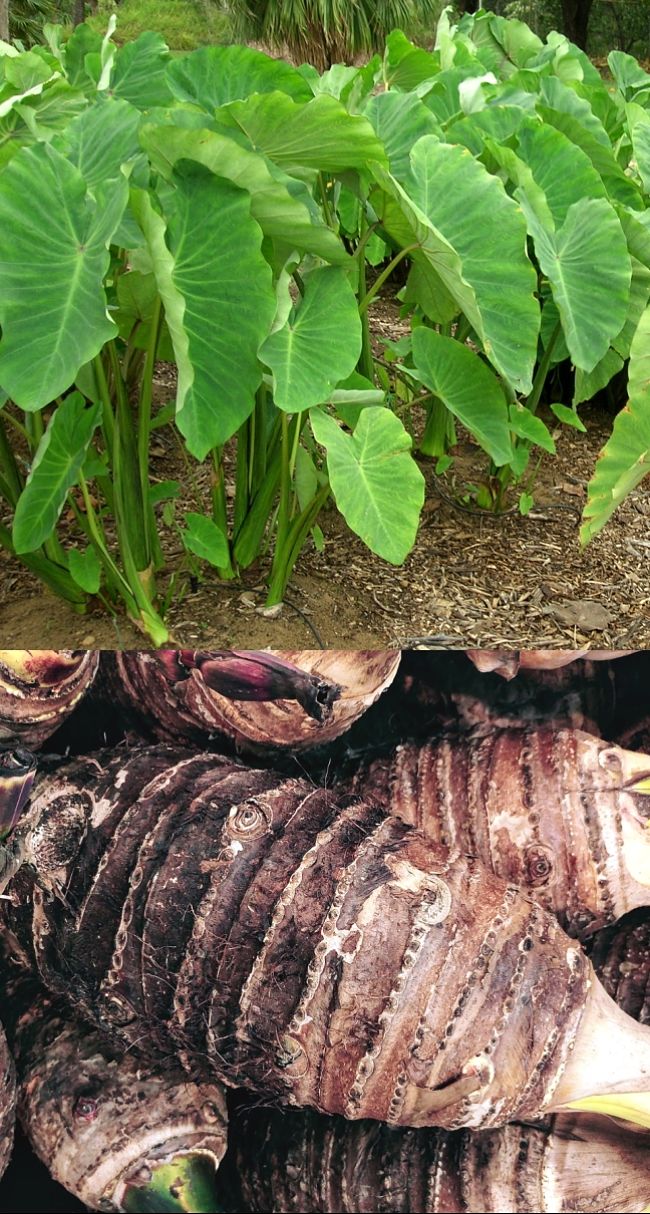Planting and Growing Guide for Cocoyam (Colocasia esculenta)
Description
Cocoyam, also known as Taro, is grown for its large and nutritious corms. Cocoyam is a popular plant in sub-tropical and tropical areas. However, some varieties are ornamental and so check before you plant them. Cocoyam grows to about 1 m (3 ft) tall and has long extended stalks bearing long green leaves that are heart-shaped. Cocoyam grows well in warm and hot, humid areas, that have no frosts and mild winter. Cocoyam needs a long growing period to produce large tubers. Deep and frequent watering is required as dryness will cause the plants to stop growing. It grows best in full sun but can handle some shade. It can be grown in cooler areas by digging up the tubers and storing them in a cool dry place. Cocoyam is ruined by frost and extended periods of cold weather. There are many varieties to choose from. It is a large plant and requires plenty of space.
The young leaves and shoots can also be cooked as a vegetable. But, beware that Cocoyam that is not cooked properly, the acridity can cause itchiness in the throat and mouth.
Cocoyam can be cooked like potatoes. or sliced and added to soups. It can be steamed, lightly boiled, dry roasted, or fried or steamed. It is not eaten raw.
Planting Guide
Seed Depth: Plant small pieces of tubers or suckers about 6-9 cm (2-4 inches) deep in warm soil. Can be grown in large pots
Space between plants: Space plants about 80 cm (2-4 feet) apart.
Harvest Time: Harvest in about 25-30 weeks, when the leaves start to die off
Hints:
- Does best in full sun in cooler areas, but can grow in partially shaded areas as well
- Frost tender, and frosts will kill the plants
- Does best in deep, rich, well-drained soil with neutral to slightly acid pH

Disclaimer: The PlantWhatWhen vegetable planting guide is only designed for use as a very general reference for home gardening purposes. It is not to be used for farming, markets or commercial activities of any kind whatsoever. We take absolutely no responsibility for the accuracy and adequacy of the information provided on this site. We recommend that you consider your local climate, weather patterns and conditions when deciding what and when to plant in your home garden. It's entirely your own decision. Happy Gardening and Best Wishes!